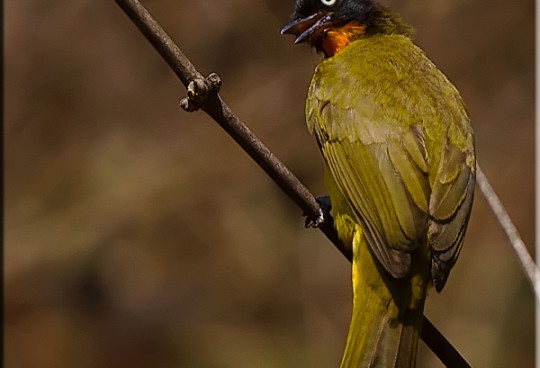The black bulbul (Hypsipetes leucocephalus), also known as the Himalayan black bulbul or Asian black bulbul, is a member of the bulbul family of passerine birds. It is found in southern Asia from India east to southern China. It is the type species of the genus Hypsipetes, established by Nicholas Aylward Vigors in the early 1830s. There are a number of subspecies, mostly varying in the shade of the body plumage which ranges from grey to black, and some also occur in white-headed morphs, as also suggested by its specific epithet leucocephalus, literally “white head”. The legs and bill are always rich orange-red.
This bulbul is found in broad-leaved forests, cultivation and gardens mainly in hilly areas, but Himalayan populations are known to sometimes descend into the adjoining plains in winter. Black bulbuls feed mainly on seeds and insects, and they are often seen in small groups, either roosting or flying about in search of food. They are particularly fond of berries. They are known to feed on a wide range of berries including Celtis, Rosa, Melia and Ehretia in the Himalayas. They feed on the nectar of Salmalia, Erythrina, Rhododendron and other species. They make aerial sallies for insects. Not globally threatened. Generally fairly common to very common. It is classified as least concern by IUCN.
![]()






Sorry, the comment form is closed at this time.